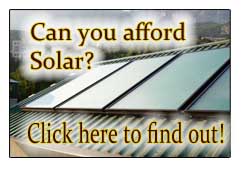
|
||||||
|
|
||||||
Solar Design: Hydronic Vs. Photovoltiac. Which is Better?It's pretty straight forward when you look at the difference between Photovoltaic and Hydronic approaches: The Photovoltaic approach is only to make electricity. In most cases only a percentage of the electricity you produce goes towards your electric bill unless you own the panels on your house. If you own the panels on your house, you're payback on the system will most likely will outlive you because of the cost of the system, and the amount of electric energy used each month. The Hydronic approach is more complicated at first glance, and should be designed into the project as early as possible however, there are so many different applications and designs that can be augmented to existing heating systems down the road that it always makes sense to review an application post building. In addition the payback is much faster on a Hydronic system no matter what the size. |

|
|||||
Here are some other advantages to Hydronic Solar that really makes it a no brainer which type of system to install:
|
||||||
|
Read on: Information about My Solar Installation at the Summit |
||||||
|
Home | About | My System | Solar System Design | Cost Savings | Contact Us |
||||||

